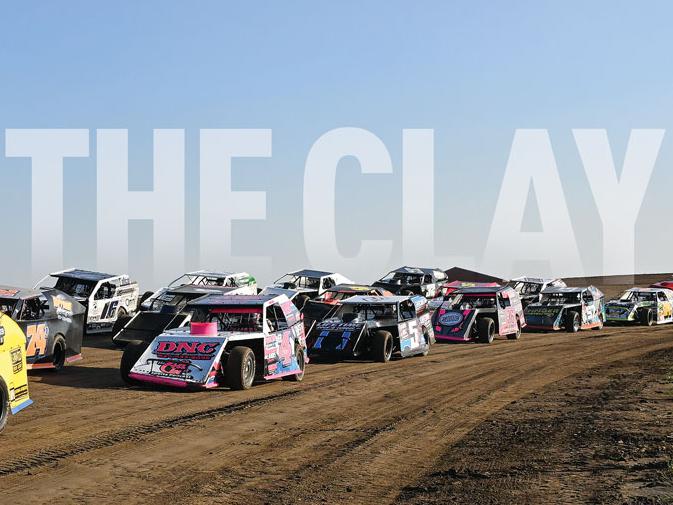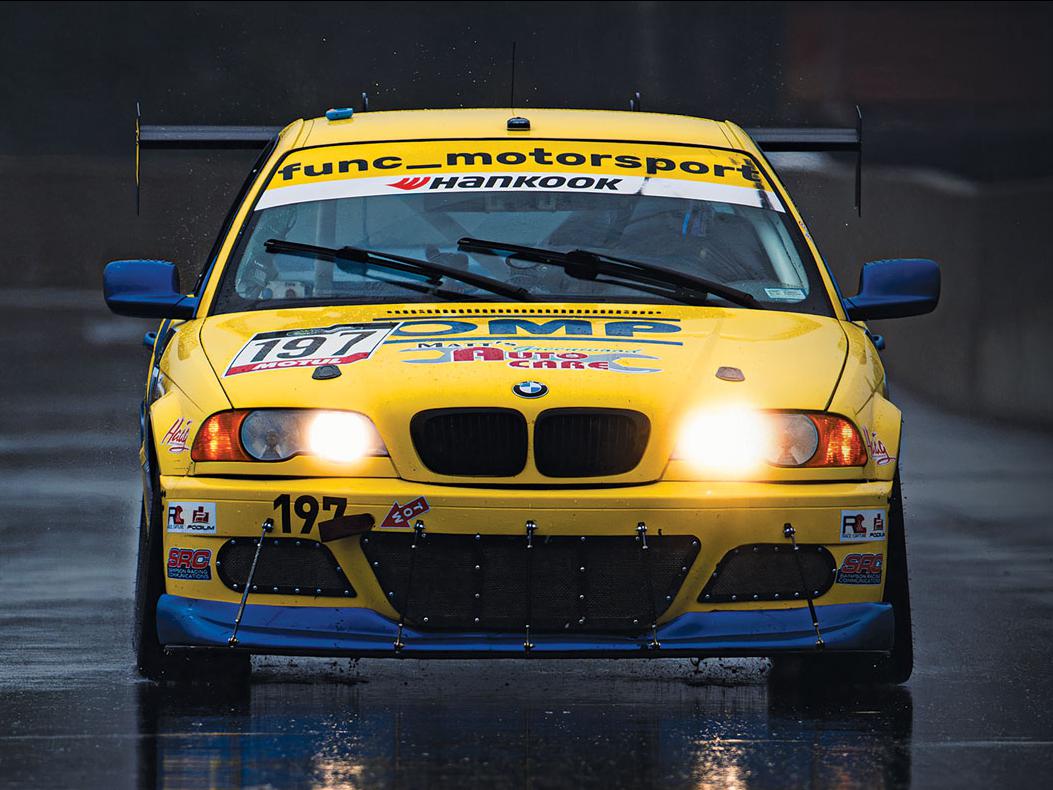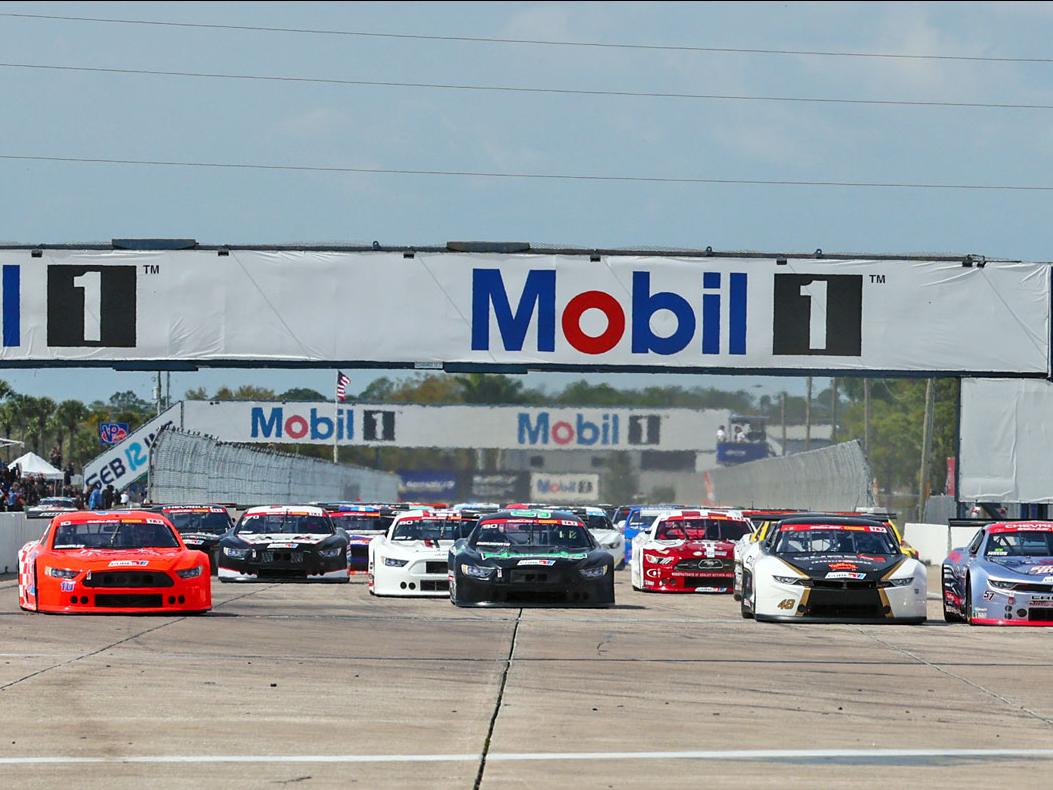Road Trippers
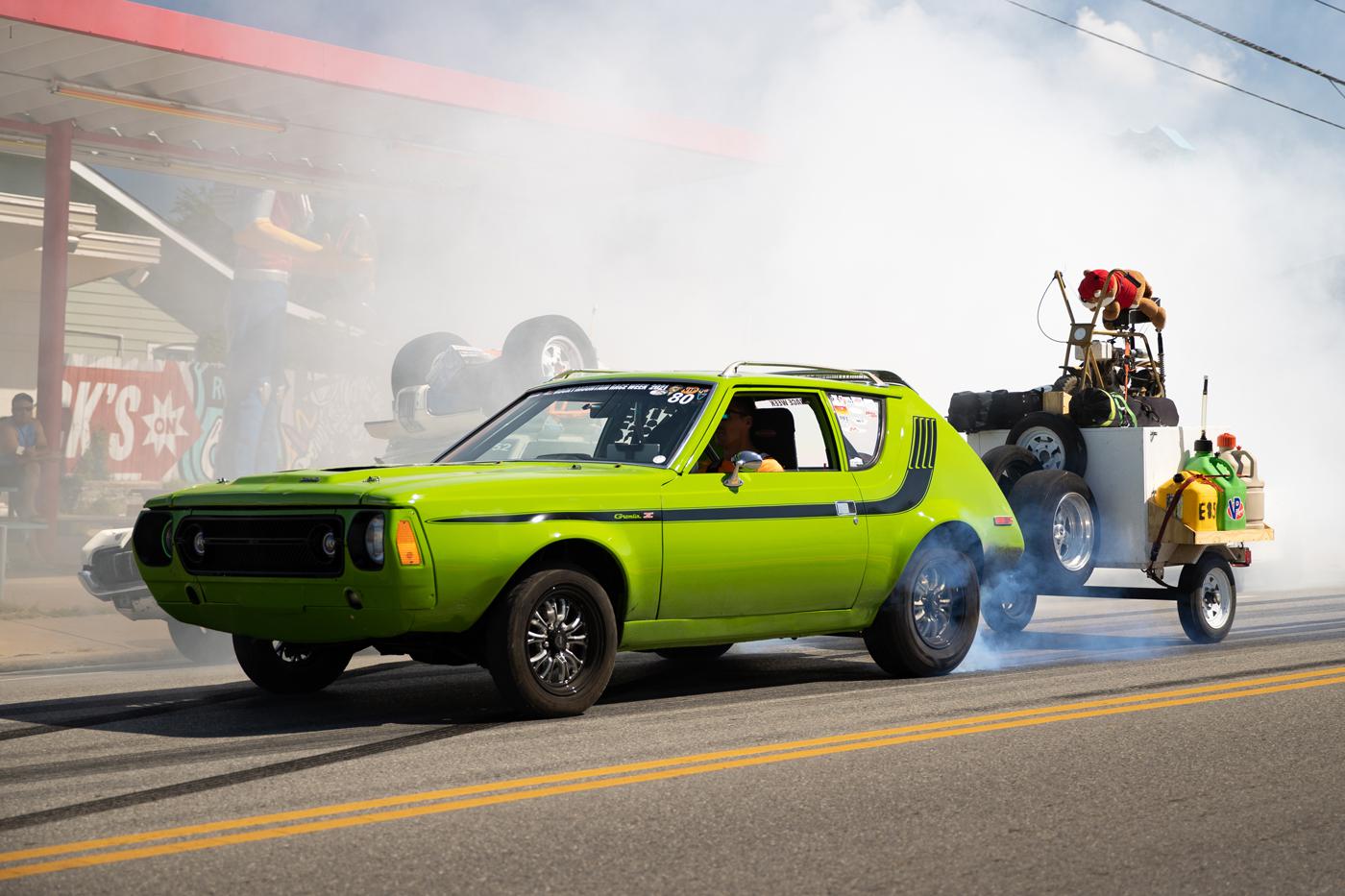
Photo courtesy of Scott Witty, 1320 Video/Rocky Mountain Race Week
The multi-day race format is more popular than ever, and unprecedented demand is poised to create a new niche for drag-and-drive events within road-legal competition.
Back in the early 2000s, hot rodding luminary David Freiburger was looking for a way to bring the challenge and intensity of Brock Yates’ annual One Lap of America to the drag racing world. As the spiritual successor to the Cannonball, One Lap’s cross-country, multi-day road racing format puts both man and machine to the test while also incorporating the pragmatic strategies that are required to make a race-tuned production vehicle reliable—and bearable—for extended periods of time on America’s highways.
The concept led Freiburger to debut the first Hot Rod Drag Week in 2005, an event that sees racers compete at four different tracks over the course of five days while also doing the trek between those locations using the cars that they’re racing. Competitors are required to drive anywhere from 700 to 1,000 miles on public roads over the course of a given Drag Week event, a factor that makes the car’s street drivability a crucial element to a team’s success.
“There’s a lot of debate about what’s considered a street car and what isn’t,” noted Hot Rod magazine editor-in-chief John McGann. “But if you can register it and you’ve got license plates on the car, you can compete at Drag Week. Originally that meant the fastest ‘street cars’ at the events were doing quarter-mile times in the 8s. Now we’re in the 5s.”
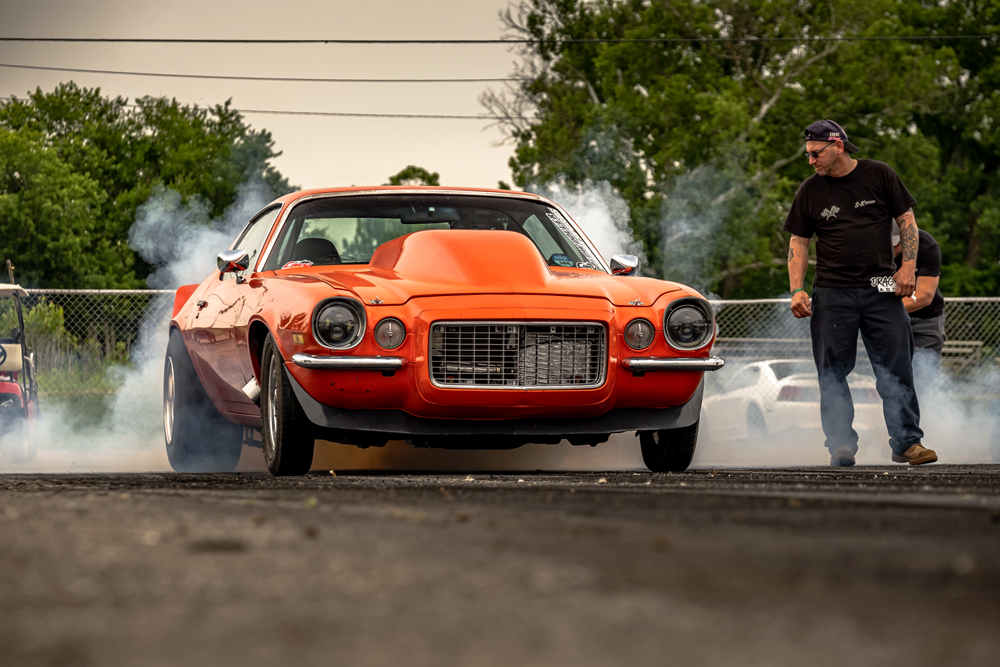
The event has become an institution for the Drag Week faithful and has convinced many racers to build cars specifically for the competition and its unique demands. That enthusiasm has in turn helped to foster the creation of new events that are inspired by its format and ruleset, a trend that is bringing this unique take on drag racing to new regions of the US and beyond.
Relatable Racing
“It’s really the ultimate test, and ultimate bragging rights come with it,” said Matthew Frost of Rocky Mountain Race Week (RMRW). “If you can complete one of these events it allows you to say, ‘My drag car runs such and such number, and I was still able to drive it a thousand or 1,200 miles in conditions that most drag cars will never see.’ The challenge of being able to build something that can do that is a big part of the appeal for racers. I think a lot of people don’t realize what they’re getting themselves into when they initially sign up. Once they’re in, they discover how much strategy and critical thinking is involved.”
The street-legal element of drag-and-drive events makes them more relevant to would-be fans as well. “Part of it is the spectacle of seeing what are essentially Pro Mod cars driving down the freeway towing a trailer,” McGann said with a laugh. “Someone looks at that and then they look in their garage and think to themselves, ‘OK—I’m not going to run 5s or 6s, but could I turn my 11-second car into a 9-second car and compete in Drag Week?’ One of the most popular classes we have is Street Race, and those cars are not allowed to run faster than 8.50.”
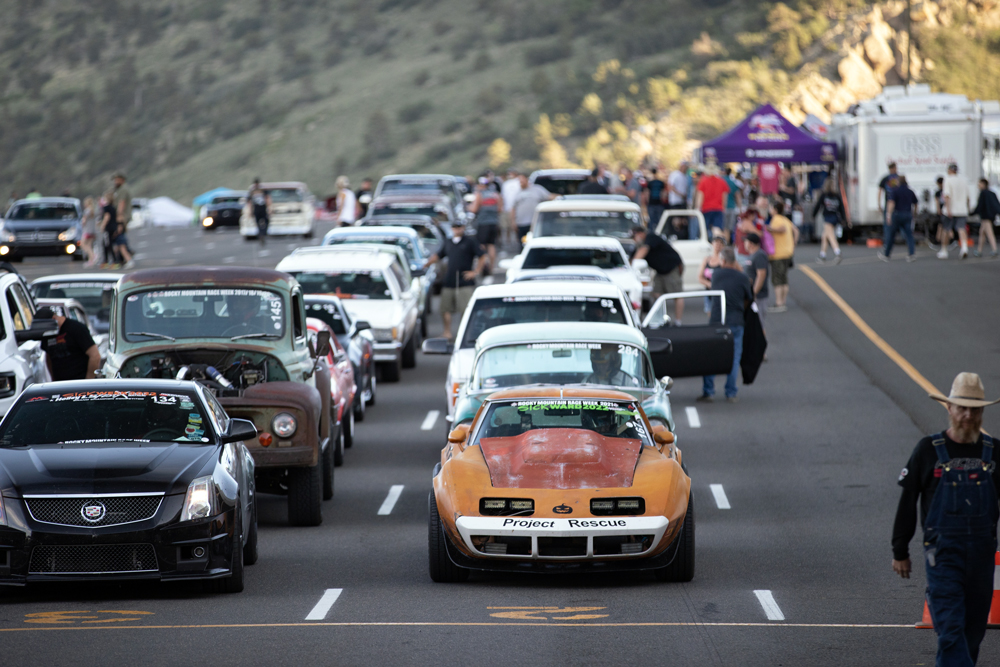
That relatable aspect also makes these events particularly attractive to sponsors. “It’s very affordable for them,” said J. Heid of the Summit Racing Midwest Drags presented by Mickey Thompson Tires in Westfield, Indiana. “For what it would cost Summit to buy two days at a national event, I can put on several entire drag-and-drive events. And while they might sell a dozen or so products that are relevant to a fuel car, the sky is the limit for a guy who is competing—or wants to compete—in his third-gen Camaro.”
The wide range of classes at these events also attracts a similarly diverse roster of cars and fans. While the 6-second machines might get the lion’s share of notoriety, racers on tighter budgets can still build competitive cars and enjoy the same sense of challenge and camaraderie at these events. “We have racers that show up with $5,000 cars and other ones that show up with builds that are well into six-figure territory,” said Dustin Watts of Miles of Mayhem in Red Deer, Alberta, Canada. “You can show up in just about anything and do one of these drag-and-drive events, and I think that has helped draw more and more people in.”
Redefining the Street/Strip Setup
The fundamental strategies of building and tuning fast drag cars have been well known for some time now but adding hundreds of miles of driving on public roads over the course of a few days adds a significant twist to the formula. While a purpose-built drag car will spend most of its life running at wide-open throttle for a few seconds at a time in a highly controlled environment, the real world adds an array of circumstances that normally don’t need to be taken into consideration. Events like Drag Week allow for a co-driver but forbid any kind of support vehicle, which means that not only are the journeys from track to track being done in the car you’re competing in, you’re also hauling all of your gear in the car or towing a trailer while contending with traffic and other real-world driving factors. That means a competitive combination needs to be able to perform at the drag strip while also remaining reliable and relatively comfortable for long stints behind the wheel.
“A two-speed Powerglide is the type of transmission that you’d typically find in faster production-based drag cars,” said McGann. “We also see a lot of TH400 three-speed automatics. But if you were to gear a car for drag strip performance with a transmission like that without doing anything else, the rpm’s on the highway will likely be way too high to be usable for this type of event. To get the best of both worlds, a lot of people will run an overdrive like a Gear Vendors’ unit that they can engage when they get on the highway to bring the revs down.”
Meanwhile, sportsman and grassroots racers will often opt to compete in a car with a modern automatic or six-speed manual transmission, both of which already have overdrive gears built into their designs, while others will simply opt to bring a set of wheels with tall tires that they can install on the car before they hop on the road in order to bring the engine speeds down to a reasonable level while rolling down the highway.
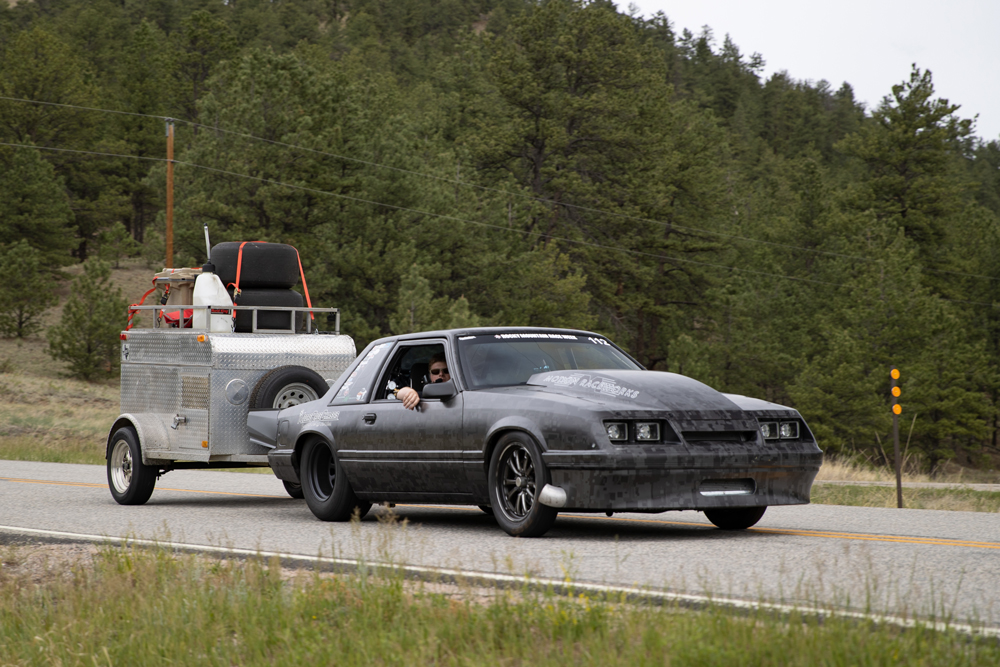
“We see a lot of cooling upgrades and people swapping in more comfortable seats,” said Watts. “Radios for communication between the driver and co-driver are also common because the cars are so loud. And something we’ve been seeing a lot of lately are dual-fuel tank setups. One will be filled with methanol, E85, or something similar, while the other will be the normal pump gas tank, and they’ll switch back and forth as needed between the track and the road drives.”
The ability to create two distinct personalities for road and track use plays heavily into this type of setup. “A lot of folks are using Holley EFI systems and HP Tuners systems to create multiple tunes for the car,” Heid said. That can tie into using two different fueling systems while also allowing racers to make adjustments based on track conditions and weather. But a lot of the setup ultimately comes from trial and error. “Novices will want to make the car as fast as possible. The folks who’ve been doing these types of events for a while will want to make the car serviceable on the side of the road at 3 a.m.”
That typically means using less-exotic parts so it’s easier to track down replacements or remembering to bring along a wide variety of spares. “If you’re stuck on the side of the road and you can’t buy an alternator at the local parts store because you decided to use a 16-volt charging system, you better have an extra one with you,” Heid added.
Frost told us that many of the parts that were problematic specifically in this type of event format have been sorted out over recent years, but drag racing-related parts failures are still common occurrences at the track. “Valvetrain issues aren’t as big of a problem as they used to be. The major stuff is typically driveshaft and rearend failures,” he said.
Getting the Word Out
While Hot Rod Drag Week has become a well-known commodity within the racing community thanks to many years of publicity and development, there are a number of newer annual events that are also starting to pick up momentum thanks to strategized promotion.
“We approach this in several different ways,” said Heid. “The first way is that I’ll go out to tracks, and when I see a really nice street car, I’ll give them a card with a personal invite. We also have an aggressive social media campaign where we’re targeting specific audiences, and I go to similar events to help promote what we’re doing and meet some of these racers as well. All of the other national events are part of my marketing budget.”
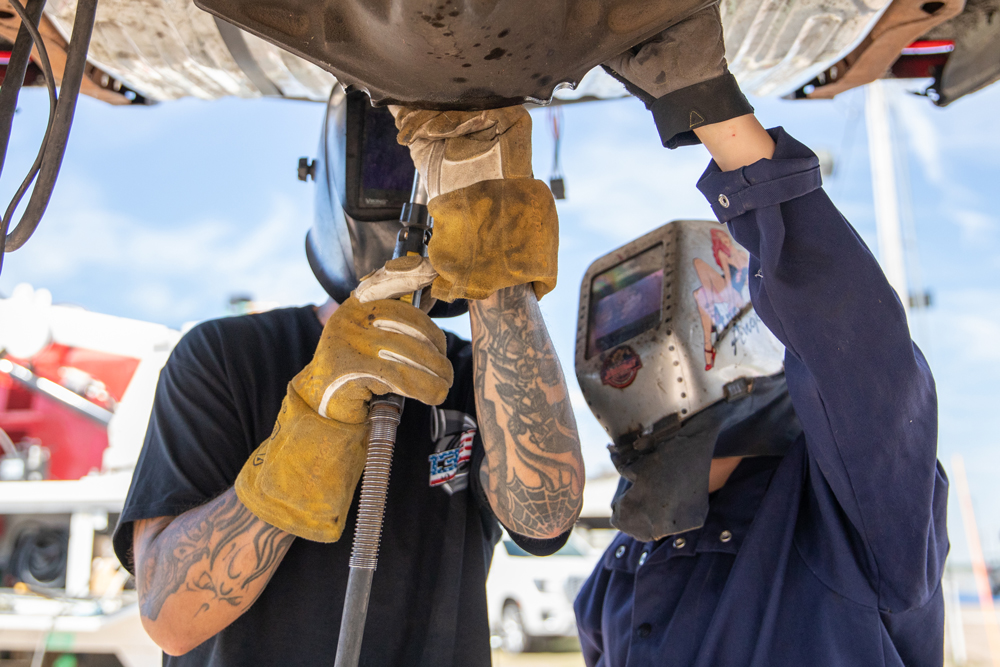
Other organizers stand out from the crowd by offering elements that other drag-and-drive events don’t. “Our event is a bit more family-oriented in a sense,” said Frost. “We have something called Road Week, where you and your family can pile into the car and follow along with the racers for the week for a set price, and it can also be a great way for folks who’re considering participating to see what it’s like first-hand.”
To provide a bit more help to the racers, RMRW also offers access to a portable car hoist, and a welder follows the route and helps make repairs to cars. There’s a support car that racers can use at the track to go get parts if they need to as well. “We also have about $50,000 worth of payouts at any given event, and our format is a bit unique. For us, the ET average for the week stops on the fourth day, and on the fifth day of racing we move to a heads-up shootout format. So you can win your average and you can win the shootout, too,” Frost added.
But as Michael Narx explained, drag-and-drive events aren’t exactly hurting for entries these days regardless. Narx and Heid are co-founders of Drag-n-Drive.com, a site that collects both current and historical data about these types of events. “At the end of this year, almost 2,000 people will have competed in a drag-and-drive event, and in 2019 there were maybe 600. So in just three years the numbers have basically tripled. I think a lot of folks that were stuck at home during the lockdown got their cars finished during that time, and now they’re ready to do something with them.”
Looking Ahead
With a standardized ruleset in place and significant momentum now behind drag-and-drive competition, McGann envisions the potential for these events to work off of one another. “I could imagine a scenario where these other events kind of culminate at Drag Week, kind of like the Superbowl. Drag Week happens in September, so it’s near the end of the racing season for most people, and I could see a situation where whoever won Sick Week in March goes up against the person who won Rocky Mountain Race Week in June. Something where these regional events basically lead up to Drag Week.”
Frost noted that shorter, weekend-style drag-and-drive events are becoming more prevalent as well, partially as a result of unmet demand for these larger events. Although he sees this as a positive sign for both racers and fans, he’s concerned that it could undermine the original precedent set by Drag Week. “We typically have 300 to 400 people on the waiting list for every one of our events, so there’s plenty of people who want to do this. But I feel like a similar situation played out with no prep. Initially there were solid events with good payouts and people would travel to those events. Then everyone started thinking that they could do this in their own backyards, and now the bigger events aren’t as prevalent as they were because the crowds are smaller, and the sponsors are harder to get. I just don’t want to see this get over-saturated.”
It’s a delicate balance to achieve, but right now it’s clear that demand is significantly outweighing supply. “Over the next few years, I think more and more people are going to get involved and the cars are going to get really dialed in,” said Watts. “The difference between just the first year the second year was huge for us—the number of fast cars out there probably doubled, and I bet it’ll double again next year. We haven’t hashed out all the details yet, but we’re thinking we could probably add a second five-day event in British Columbia as well. The demand is definitely there. There are people who tried to pay for next year’s event before we had even done this year’s event.”
Sources
Hot Rod Drag Week
motortrend.com/events/hot-rod-drag-week/
Miles of Mayhem
milesofmayhemdnd.ca
Rocky Mountain Race Week (RMRW)
rockymountainraceweek.com
Summit Racing Midwest Drags
summitmidwestdrags.com
 MEMBERSHIP LOGIN
MEMBERSHIP LOGIN JOIN PRI
JOIN PRI
